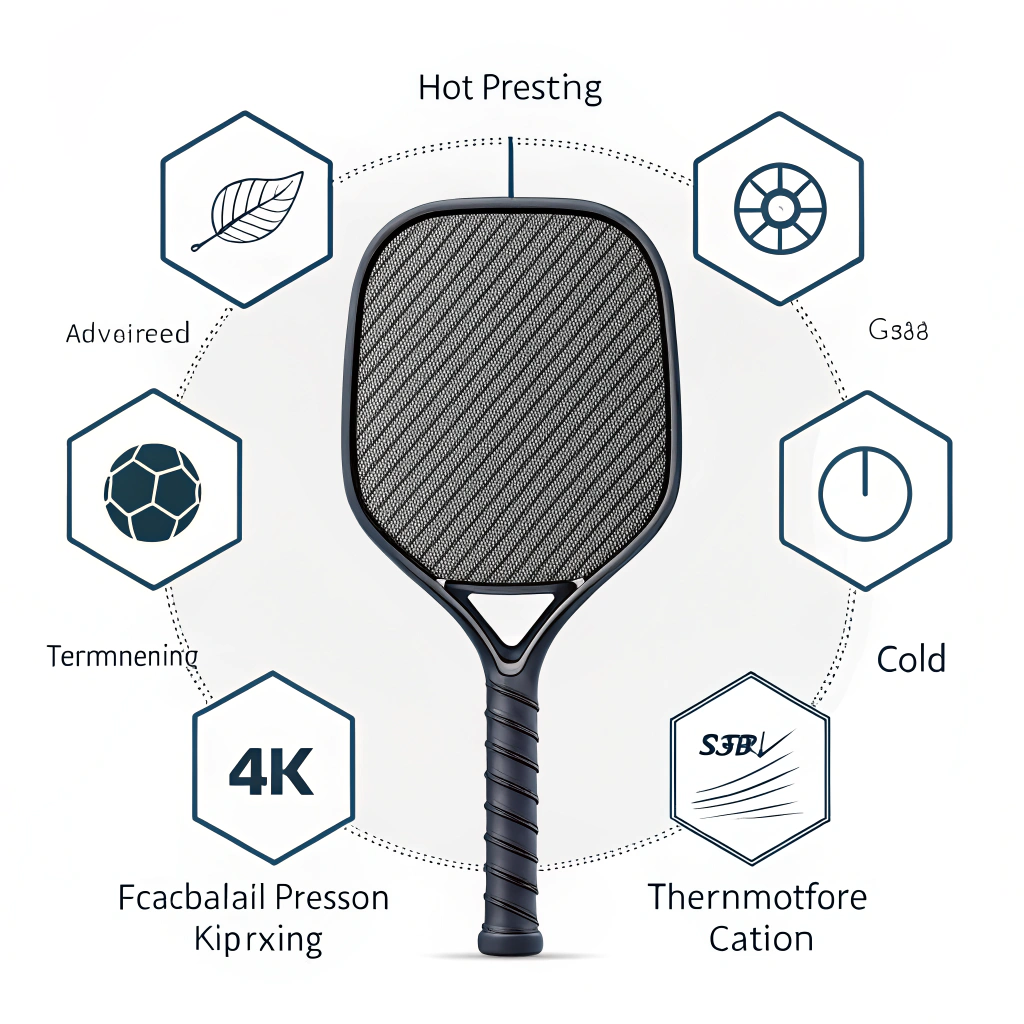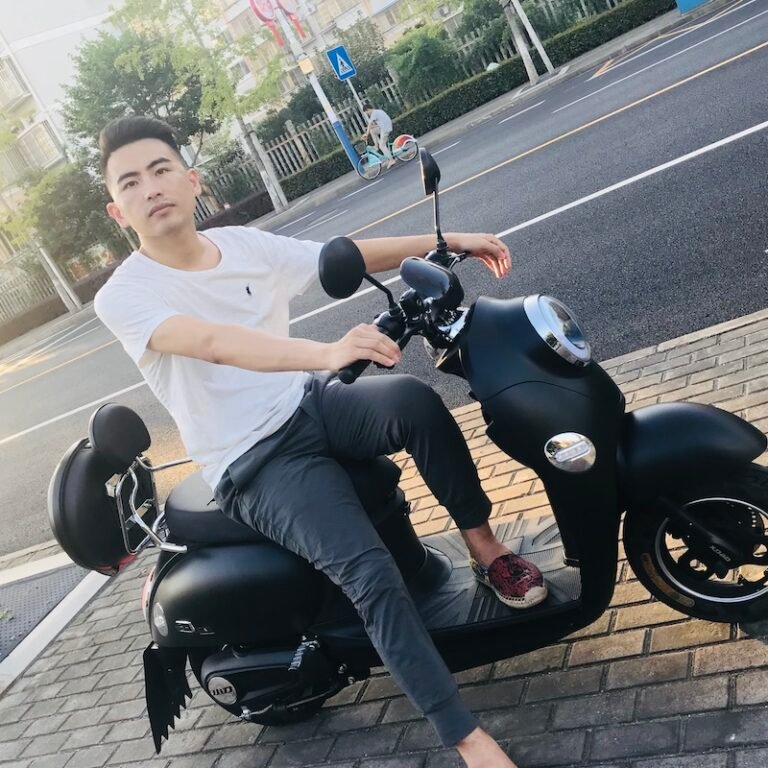carbon fiber1 pickleball paddles offer a winning combination of reduced weight, enhanced durability, and superior control. This article explains how different carbon fiber types—3K, 12K, and T300—compare in performance and durability, and how advanced manufacturing methods like hot pressing2, cold pressing3, and thermoforming4 contribute to achieving high levels of precision in paddle production.
As B2B procurement managers and product development specialists in the sports equipment industry, you face the challenge of selecting materials that deliver both performance and longevity. With the rise of competitive play, the material science5 behind pickleball paddles has seen significant technical evolution. Manufacturers like NEX Pickleball are focusing on advanced carbon fiber compositions to meet players’ needs, ensuring every paddle performs impeccably under intense gameplay. In this article, we compare various carbon fiber types and discuss production techniques that optimize performance, control, and durability—helping you decide which material best suits your manufacturing requirements.
Carbon fiber is highly regarded for its strength-to-weight ratio, but not all carbon fibers are created equal. Below is a detailed overview of three common types:
3K Carbon Fiber is known for its balance between strength and flexibility. It is ideal for paddles requiring high rebound force and excellent durability while reducing vibration during play.
Key properties:
- Moderate fiber thread density
- Good flexibility and strength
- Effective in reducing fatigue through vibration damping
With a higher thread density, 12K Carbon Fiber produces a smoother surface finish and exceptional hardness. This makes it highly effective in competitive settings where extreme strength and impact resistance are critical.
Key properties:
- High thread count ensures uniform surface
- Increased hardness and improved durability
- Offers enhanced stability during high-impact hits
T300 Carbon Fiber is known for its outstanding tensile strength and balanced performance. It merges strength with lightness, making it a popular choice for paddles that demand both power and enhanced maneuverability.
Key properties:
- High tensile strength exceeding common thresholds
- Excellent blend of power and precision
- Preferred for high-performance applications requiring a lightweight edge
Below is a table that summarizes the differences among these carbon fiber materials:
| Property | 3K Carbon Fiber | 12K Carbon Fiber | T300 Carbon Fiber |
|---|---|---|---|
| Thread Density | Moderate | High | Moderate to High |
| Surface Smoothness | Good | Excellent | Very Good |
| Rebound Force | High | Moderate to High | High |
| Durability | Excellent | Superior | Excellent |
| Vibration Reduction | Significant | Moderate | Good |
This comparative table helps you quickly identify the material attributes that best fit your product needs, whether it’s enhanced power, controlled ball response, or longevity under continuous play.
The performance of carbon fiber paddles is not solely defined by the material type; advanced production methods also play a crucial role. NEX Pickleball utilizes three distinct techniques to optimize paddle design—hot pressing2, cold pressing3, and thermoforming4. Understanding each method’s benefits and limitations can guide your manufacturing decisions.
Hot pressing involves heating the materials and applying pressure to mold the paddle. This method is favored for its efficiency and the ability to produce sturdy, high-strength paddles.
Advantages:
- High Production Efficiency: Suitable for large-scale manufacturing due to rapid cycle times.
- Structural Integrity: Results in paddles that withstand intense impact.
- Durability: Enhanced impact resistance is ideal for high-performance play.
Disadvantages:
- Material Property Alteration: Elevated temperatures may slightly modify the inherent properties of carbon fiber, potentially affecting the paddle’s feel.
- Equipment Costs: Requires significant investment in high-temperature pressing equipment.
Cold pressing shapes the paddle materials at room temperature under mechanical pressure. This method offers intricate control over the paddle’s structure without altering the material properties.
Advantages:
- Precision: Allows for exact control over thickness and structural uniformity.
- Material Integrity: Maintains the natural properties of the fibers, ensuring optimal flexibility and ball feel.
- Enhanced Control: Players benefit from improved handling due to the maintained softness of the material.
Disadvantages:
- Longer Production Cycles: Increased processing times reduce overall efficiency.
- High-Quality Requirements: Demands tightly controlled pressure settings and top-notch equipment.
Thermoforming is a process where materials are heated to a softening point before being molded into complex shapes. This flexibility in design is especially beneficial for paddles requiring unique ergonomic designs and precise material distribution.
Advantages:
- Design Flexibility: Supports the creation of paddles with intricate, custom designs.
- Performance Stability: Precise material distribution helps maintain overall paddle stability.
- Premium Quality: Frequently used for higher-end products, ensuring a superior finish.
Disadvantages:
- Extended Production Time: More time is required to carefully form and cool down the paddle.
- Cost: Higher equipment expenses and longer cycles are typical compared to other methods.
To simplify this comparison, consider the following table:
| Process | Advantages | Disadvantages | Best For |
|---|---|---|---|
| Hot Pressing | High efficiency; strong structure; durable | Alters some material properties; high cost equipment | Large-scale, high-impact paddles |
| Cold Pressing | Precision control; maintains material integrity | Longer production cycle; requires precision control | Detailed design and enhanced feel |
| Thermoforming | Flexible in design; precise material distribution | Longer production time; expensive | Premium, custom-designed paddles |
This table illustrates how each production technique aligns with varying manufacturing priorities, from cost to product finish. Depending on whether you prioritize speed, quality, or design flexibility, your selection of technique will influence the final product performance.
For a company like NEX Pickleball, the integration of cutting-edge carbon fiber materials with advanced production processes is the cornerstone of producing paddles that excel in performance and reliability. Here’s how these elements work together:
-
Material Chemistry and Engineering:
The choice between 3K, 12K, and T300 carbon fibers affects a paddle's responsiveness, durability, and overall playability. Each variant has its own technical specifications that benefit different play styles. For instance, a 12K paddle offers a smoother surface, favoring players who demand precision, while T300 combines both power and agility. -
Manufacturing Process as a Performance Enhancer:
Advanced production methods ensure that the selected material retains its inherent properties. For example, while hot pressing enhances structural integrity, cold pressing maintains the fiber’s natural flexibility and impedance absorption. The choice of process should therefore match the specific carbon fiber type used to maximize benefits. -
Quality Control and Consistency:
Rigorous testing procedures verify that every paddle meets strict quality standards. Utilizing precision techniques in manufacturing minimizes inconsistencies, ensuring that high-performance carbon fiber paddles can be reliably produced and tailored for both recreational and competitive play. -
Customization for Market Differentiation:
Offering customizable options such as varying paddle thicknesses, grip sizes, and surface treatments—achieved through precise production methods—allows for addressing specific customer demands. This aspect is highly attractive for retailers and sports organizations looking for exclusive or branded equipment.
Through the synthesis of material science and production precision, manufacturers can deliver paddles that not only meet but exceed the performance criteria required in today's fast-paced sports environment. The balance between innovation and cost efficiency becomes essential in maintaining competitive advantage in the sporting goods market.
In summary, selecting the ideal carbon fiber for pickleball paddles involves a detailed assessment of material properties and production technologies. 3K Carbon Fiber offers flexibility and durability for players looking to reduce vibration and maintain control, while 12K Carbon Fiber provides a premium surface and enhanced hardness for high-intensity play. T300 Carbon Fiber stands out as a balanced option delivering both strength and agility.
The choice of production method—be it hot pressing, cold pressing, or thermoforming—should align with the selected material’s characteristics and your targeted market segment. By comprehensively understanding these variables, manufacturing professionals can optimize product designs, ensuring that every paddle delivers unmatched performance and longevity.
Manufacturers aiming to integrate these advanced techniques into their production process can benefit from increased production efficiency, higher quality products, and ultimately enhanced market competitiveness. The strategic alignment of material selection with production methodology ultimately supports the core goals of innovation, superior performance, and customer satisfaction in the sports equipment industry.
It is our recommendation to benchmark against these insights when planning your next generation of pickleball paddles. Align your production processes with the inherent advantages of each carbon fiber type to create products that provide the best balance of strength, control, and durability, ensuring that you remain competitive in a rapidly evolving market with technically advanced, high-performance options.
• What are the benefits of carbon fiber pickleball paddles?
Carbon fiber paddles are lighter, allowing for easier handling and quicker reactions. Additionally, their inherent durability and vibration dampening properties reduce player fatigue, making them ideal for intense gameplay.
• What makes expensive pickleball paddles better?
High-end paddles often incorporate advanced materials like carbon fiber and fiberglass that provide better control, power, and spin. Their superior material quality and precision manufacturing processes also enhance durability and performance.
• Is carbon fiber better than graphite pickleball paddle?
Carbon fiber paddles tend to be stiffer and lighter than graphite options while offering enhanced durability. Their improved strength-to-weight ratio makes them a preferred option for players seeking both performance and longevity.
-
carbon fiber: Reading this article will provide insights into the properties, advantages, and applications of carbon fiber in high-performance manufacturing, helping you understand its role in lightweight and durable product design. Back to carbon fiber ↩
-
hot pressing: Explore an in-depth analysis of the hot pressing process, including its benefits in enhancing structural integrity and production efficiency for large-scale manufacturing. Back to hot pressing ↩ ↩2
-
cold pressing: Learn about the cold pressing technique, which focuses on maintaining material properties while delivering precision in product design and fabrication. Back to cold pressing ↩ ↩2
-
thermoforming: Discover how thermoforming enables versatile product designs through controlled heat application, ideal for creating custom and ergonomically advanced products. Back to thermoforming ↩ ↩2
-
material science: This resource explains the scientific principles behind material selection and innovation, essential for optimizing product performance through advanced material research. Back to material science ↩







